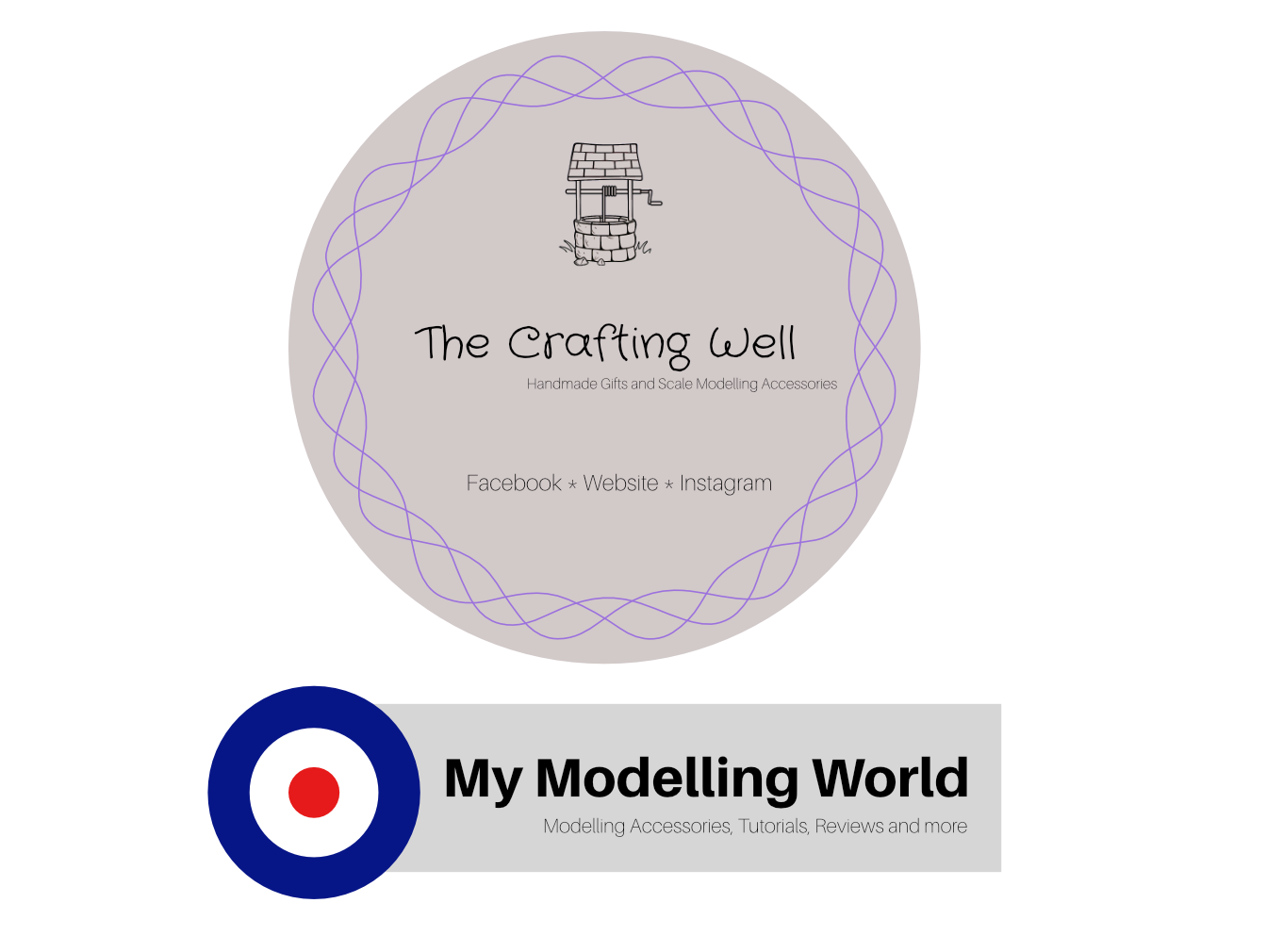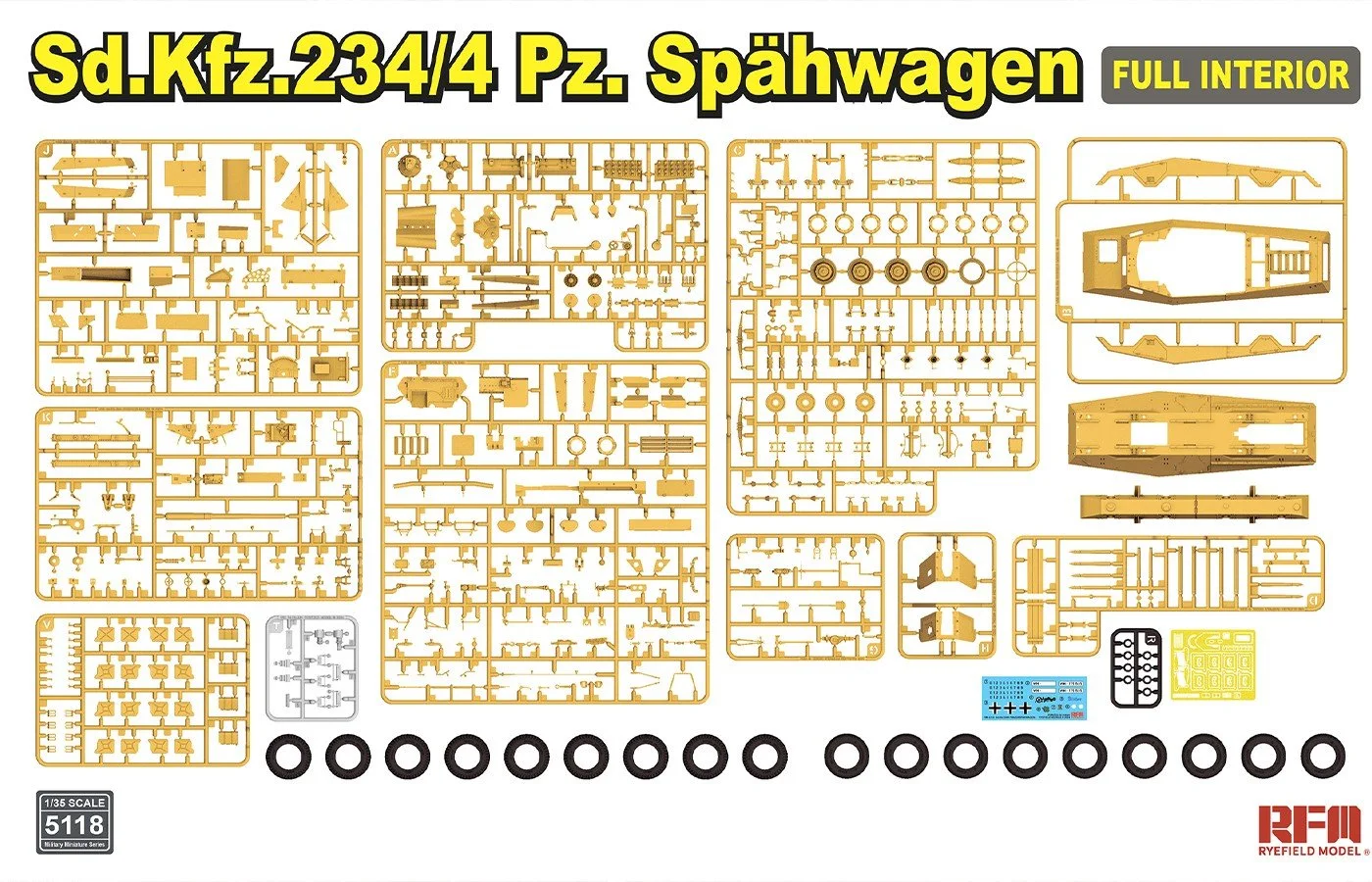 Image 1 of 2
Image 1 of 2

 Image 2 of 2
Image 2 of 2



Rye Field Model 5069 1/35 Scale Stug III G 5069
1/35 Scale Rye Field Models Stug III kit number 5069. This option comes with workable track links.
Schemes Included:
StuG. III Ausf. G (early)
Waffen SS (1933-1945)
2 SS-Pz.Div. Das Reich Bismarck, July 1943 Battle of Kursk - Prokhorovka
3 Pz.Gren.Div. Totenkopf, 1944 - Ukraine
StuG.Abt. 16.,16.SS-Pz.Gren.Div. Reichsfuhrer SS SS, November 1943 - Roma
StuG.Abt. 16.,16.SS-Pz.Gren.Div. Reichsfuhrer SS Black 4 Steyr, 1943 - Italy
1/35 Scale Rye Field Models Stug III kit number 5069. This option comes with workable track links.
Schemes Included:
StuG. III Ausf. G (early)
Waffen SS (1933-1945)
2 SS-Pz.Div. Das Reich Bismarck, July 1943 Battle of Kursk - Prokhorovka
3 Pz.Gren.Div. Totenkopf, 1944 - Ukraine
StuG.Abt. 16.,16.SS-Pz.Gren.Div. Reichsfuhrer SS SS, November 1943 - Roma
StuG.Abt. 16.,16.SS-Pz.Gren.Div. Reichsfuhrer SS Black 4 Steyr, 1943 - Italy
1/35 Scale Rye Field Models Stug III kit number 5069. This option comes with workable track links.
Schemes Included:
StuG. III Ausf. G (early)
Waffen SS (1933-1945)
2 SS-Pz.Div. Das Reich Bismarck, July 1943 Battle of Kursk - Prokhorovka
3 Pz.Gren.Div. Totenkopf, 1944 - Ukraine
StuG.Abt. 16.,16.SS-Pz.Gren.Div. Reichsfuhrer SS SS, November 1943 - Roma
StuG.Abt. 16.,16.SS-Pz.Gren.Div. Reichsfuhrer SS Black 4 Steyr, 1943 - Italy
Additional Information
During World War II, Germany's Sturmgeschütz III (StuG III) assault gun was the most widely produced completely tracked armoured fighting vehicle, and the second-most widely produced German armoured combat vehicle of any type after the Sd.Kfz. Half-track 251. It was based on a Panzer III chassis with the turret replaced by an armoured, fixed superstructure housing a more powerful cannon.
The StuG III was originally designed as a mobile assault gun for infantry direct fire support, but it was eventually modified and used as a tank destroyer, much like the later Jagdpanzer vehicles.
StuG III Ausf. G (Sd.Kfz. 142/1) Production December 1942–April 1945, 8,423 constructed, 142 built on Panzer III Ausf. M chassis, 173 converted from Panzer III
The StuG series' final and most frequent variant.
The upper superstructure was expanded, with the welded boxes on both sides being removed.
The height of the new superstructure was increased to 2160 mm.
The ventilation fan on top of the superstructure was relocated to the back of the fighting compartment, and the back wall of the fighting compartment was straightened.
The driver's periscope was decommissioned in March 1943.
MIAG joined Alkett as a second manufacturer in February 1943.
G models began receiving side hull spaced armour plates (Schürzen) in May 1943; these were designed primarily to protect against Russian anti-tank rifles, although they were also good against hollow-charge ammunition.
Some Ausf. F/8 were retrofitted with side plates.
In preparation for the Battle of Kursk, all front line StuGs and other tanks were to be equipped with Schürzen by June 1943.
The Schürzen mountings were insufficient, and many were lost in the field.
Side skirts are more common with late model Ausf Gs since March 1944, when an improved mounting was adopted.
From May 1943, 80 mm thick plates were utilised for frontal armour instead of two plates of 50 mm + 30 mm.
However, there was a backlog of StuGs with finished 50 mm armour.
Until October 1943, a 30 mm extra armour plate had to be welded or tacked on for those.
For the commander of the Ausf G., a rotating cupola with periscopes was fitted.
Cupolas had to be soldered on from September 1943 due to a paucity of ball bearings (due to USAAF bombardment of Schweinfurt).
From August 1944, ball bearings were reinstalled.
Shot deflectors for the cupolas were first placed on one factory's StuGs in October 1943, and then on all StuGs in February 1944.
For further protection, some vehicles lacking shot deflectors had numerous track pieces wired around the cupola.
For the first time, a square machine gun cover for the loader was fitted in December 1942, allowing an MG34 to be factory mounted on a StuG.
While folded back, this shield partially overlapped the front half of the loader's hatch cover when stowed.
As the front half of the loader's hatch cover was opened, a curved protrusion welded to the backside of the shield pushed the shield forward and guided the hatch cover to naturally engage a latch point on the shield, supporting the shield in its deployed position without exposing the loader to hostile forward fire.
From early 1943, machine gun shields were retrofitted to F/8 variants.
The loader's machine gun shield was eventually replaced by a revolving machine gun mount that the loader could control from inside the vehicle using a periscope.
On the Eastern Front, 27 of them were being field tested in April 1944.
Following favourable reports, these "remote" machine gun mounts were installed in the summer of 1944.
G variants were equipped with the Topfblende pot mantlet (commonly referred to as the Saukopf "Pig's head") gun mantlet without a coaxial mount beginning in October 1943.
The original boxy Kastenblende mantlet, which had armour varied in thickness from 45 mm to 50 mm, was less successful at deflecting rounds than this cast mantlet, which had a sloped and rounder shape.
The trapezoid-shape boxy mantlet was also created to the very end due to a paucity of massive castings.
From June 1944 to October 1944, a coaxial machine gun was fitted to the boxy mantlets, and subsequently to cast Topfblende, right in the middle of "Topfblende" mantlet manufacturing.
From the fall of 1944, all StuGs were equipped with two MG 34 machine guns, thanks to the inclusion of this coaxial machine gun.
A coaxial machine gun hole was bored in certain previously constructed StuGs with a boxy mantlet to install a coaxial machine gun; however, Topfblende produced from November 1943 to October 1944 without a machine gun opening could not be tampered with.
Due to a shortage of rubber, all-metal return rollers of various types were employed from November 1943 onwards.
Starting in September (MIAG facility) or November (Alkett facility) 1943 and finishing in September 1944, Zimmerit anti-magnetic coating was applied to defend vehicles from magnetic mines.
Postage Information
All our scale model orders are shipped via Royal Mail tracked 48 for domestic post and International Tracked for all overseas orders. All items are sent wherever possible on the next available working day. Our kits are packaged in cardboard boxes with recycled/recyclable packing materials. We at times wherever possible use recycled boxes and paper in order to have as lower environmental impact as possible.

















